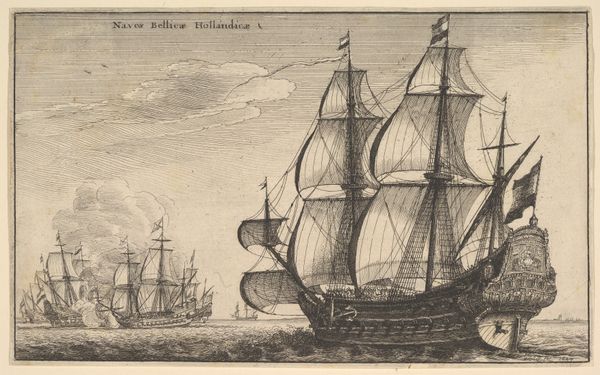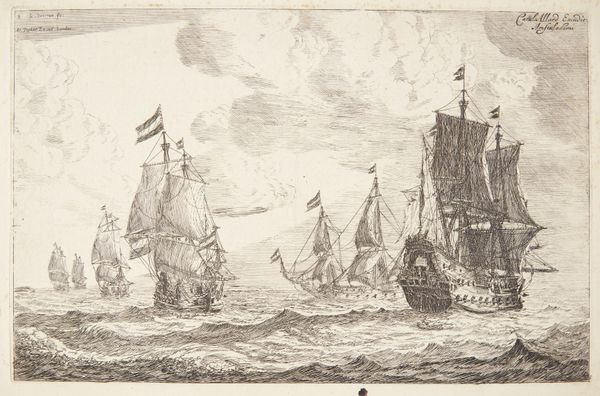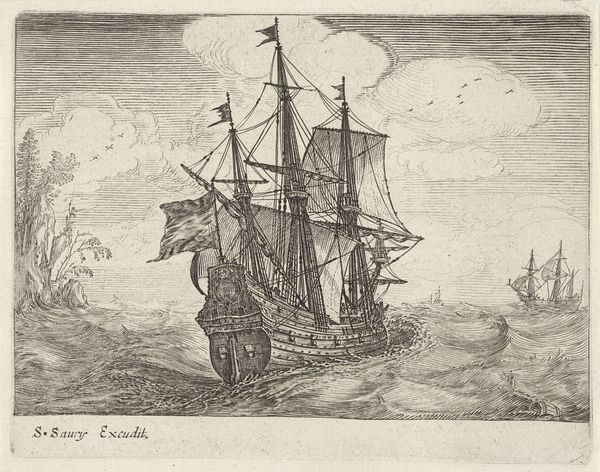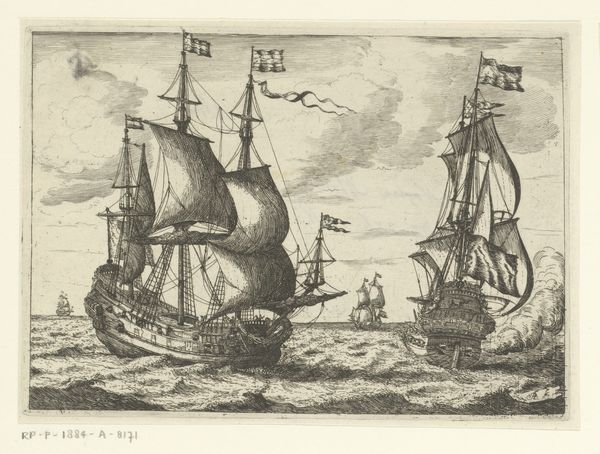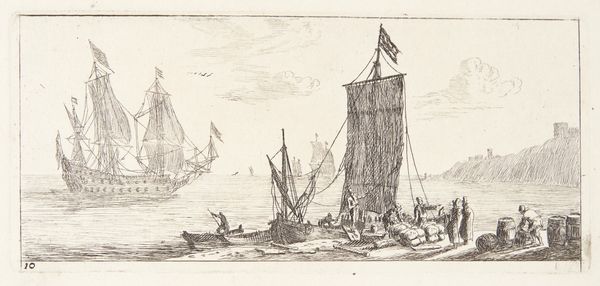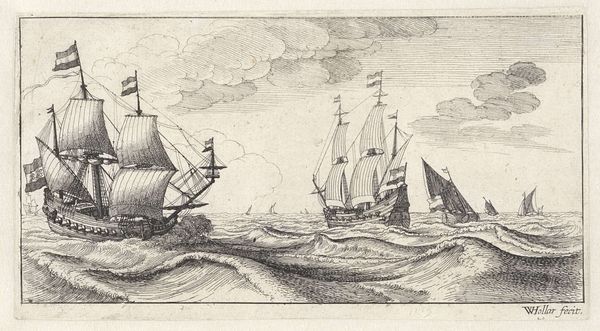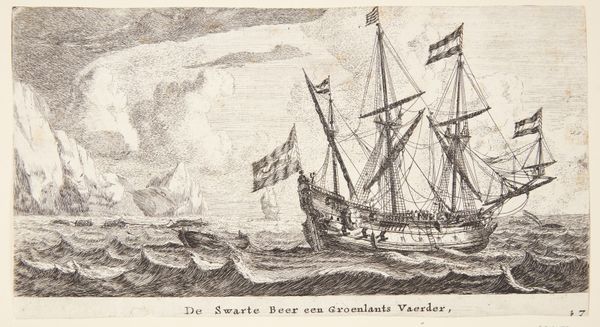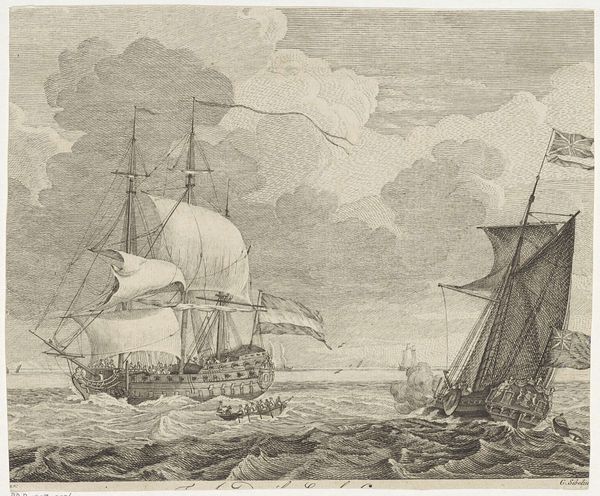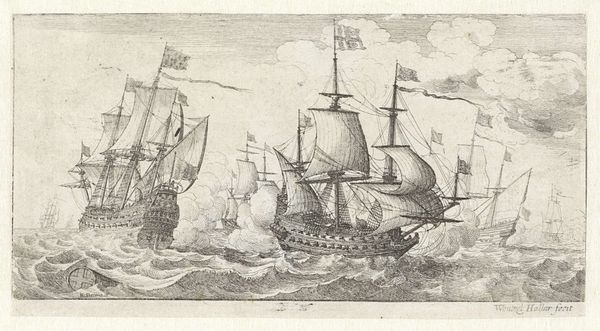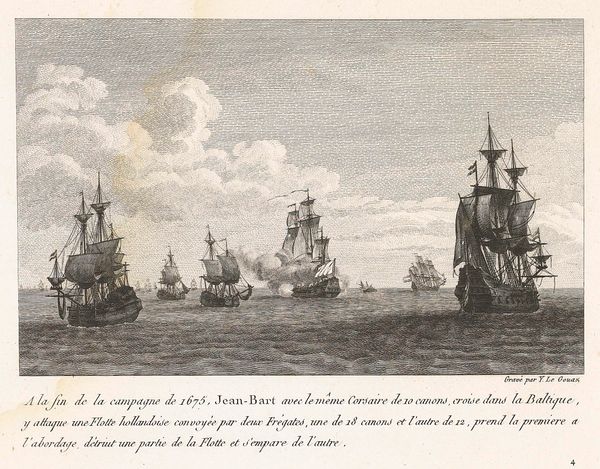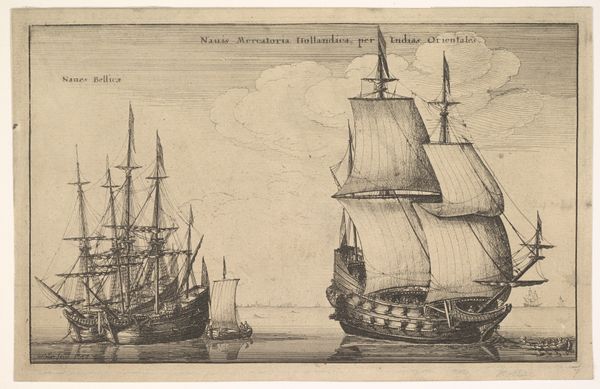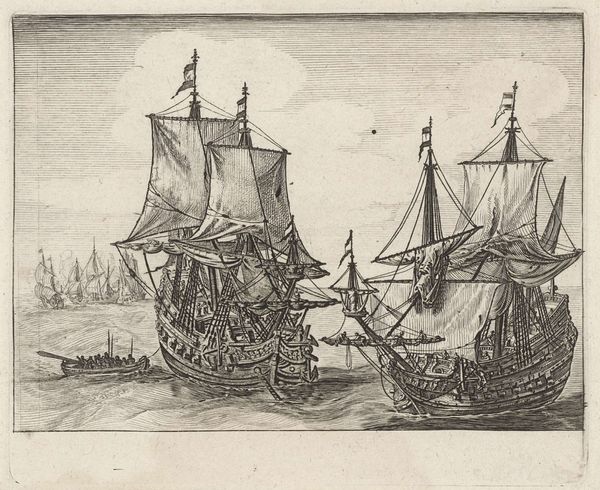
print, etching
#
baroque
#
dutch-golden-age
# print
#
etching
#
landscape
Dimensions: 135 mm (height) x 245 mm (width) (bladmaal)
Curator: Immediately, the rhythm grabs me – all those fine, nervous lines, almost vibrating with energy! You can practically feel the sea spray. Editor: Well said. The piece before us, titled "Skibene De Parel og De Dubbele Arend," comes to us from the mid-17th century, around 1652 to 1654. The hand behind this print is that of Reinier Nooms. Curator: Nooms, eh? The "master of ships," wasn't he called? Looking at it, you see that etched line captures such intricate details of these trading vessels. There's such vulnerability in those delicate hatches. Editor: Precisely. He was indeed renowned for his marine scenes. Technically speaking, Nooms here presents two ships. An East Indiaman and a West Indiaman. Consider the meticulous approach; the rigging, hull design, and the way the light catches the sails. He delineates each form through etching to create something incredibly tangible. Curator: They appear lonely though, right? It might be the near absence of the crew. A reflection on journeys, perhaps on how it takes all types, even nameless ones, to go and conquer the seas. A sense of vastness swallows human presence. Editor: It does resonate with the anxieties and aspirations of the Dutch Golden Age—the dominance over trade routes, of course, yet also intimating the ephemerality of such power. There are subtleties of line gradation which play with chiaroscuro, amplifying a brooding North Sea light. See that inky cloud towards the right, there's such contrast between this atmospheric flourish against the fine hatch marks of the foreground vessel. Curator: Oh, I'm seeing more and more details now. Thank you, now, back to our little journeys. They hold a complex beauty and tell quite an intriguing tale about ourselves! Editor: A sentiment echoed for many others at the Statens Museum for Kunst, indeed. Each observation becomes yet another sail catching wind.
Comments
No comments
Be the first to comment and join the conversation on the ultimate creative platform.
